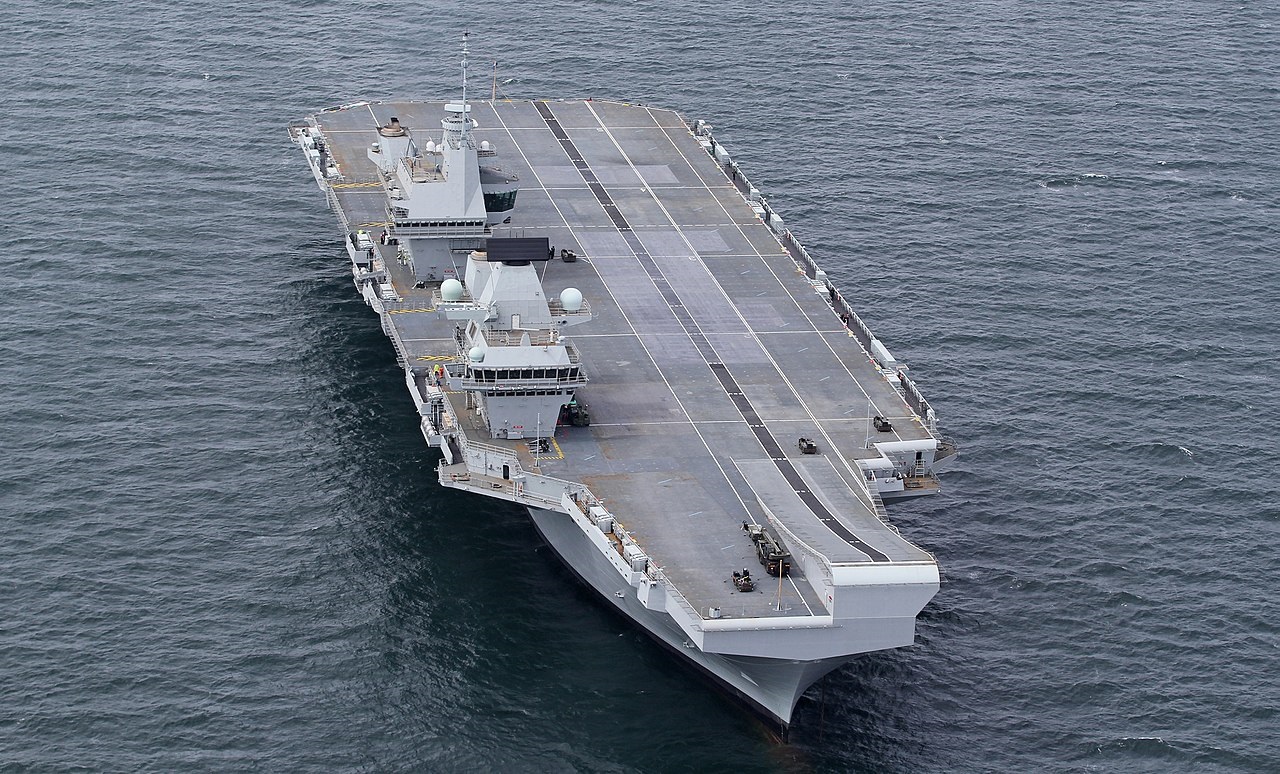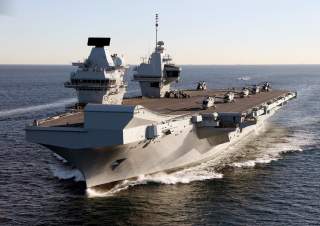Britain Is Planning to Send an Aircraft Carrier to the South China Sea
How will China react?
Britain is planning to send an aircraft carrier to the South China Sea to back up Australia as the two countries seek to deal with China’s growing aggressiveness in the region.
The announcement was made by United Kingdom Defense Secretary Gavin Williamson, who— along with Jeremy Hunt, London’s foreign secretary— met with Australian Defense Minister Marise Payne and Foreign Minister Julie Bishop in England last week.
“We have started to see a step change in our relationship,” Williamson told reporters during the visit, according to various media reports.
“For the first time since 2013, Britain has been deploying ships to the Pacific region. We have three this year, and this isn’t something we want to see as a flash in the pan.”
Williamson added: “We’re very much hoping and going to work together on deploying HMS Queen Elizabeth to the Pacific and hopefully sailing side by side with Australian vessels.”
Other articles from Australian media suggested that the joint maneuvers could include a freedom of navigation exercise in the South China Sea. In these exercises, ships travel close to China’s man-made islands in the region to protest what many argue are excessive maritime claims by China.
These reports may have been based on comments made last year by then-UK Foreign Secretary Boris Johnson, who recently resigned.
“One of the first things we will do with the two new colossal aircraft carriers that we have just built is send them on a freedom-of-navigation operation to this area [South China Sea] to vindicate our belief in the rules-based international system and in the freedom of navigation through those waterways which are absolutely vital for world trade,” Johnson said in July 2017.
The HMS Queen Elizabeth (R08) is London’s most advanced aircraft carrier, having been launched in 2014 and commissioned into service in December 2017. It is the lead ship of the Queen Elizabeth-class of aircraft carriers, England’s largest warships ever built. The only other ship in the class is the HMS Prince of Wales, which was launched late last year and is expected to be commissioned in 2020.
The HMS Queen Elizabeth has a length of 280 meters (910 feet) and displaces 65,000 tons. Despite being much larger than its predecessors, it will only require a crew of 679 individuals or 1,600 personnel when counting its full air wing. It will be powered by a more efficient electric propulsion system to save fuel.
The carrier was built to handle a mix of different aircraft. For instance, the carrier can embark up to 36 F-35B joint strike fighters and four CROWSNEST AEW helicopters. The F-35B is the short take-off and vertical landing variant of the joint strike fighter. Alternatively, the HMS Queen Elizabeth can carry as many as 12 Chinook or Merlin helicopters and eight Apache attack helicopters.
Furthermore, according to the Aircraft Carrier Alliance, which helped build the ships, the new class of aircraft carriers “will have increased survivability as a result of the separation and distribution of power generation machinery throughout each ship.”
It added: “The class has been designed with twin islands, which separates the running of the ship from the flying operations resulting in greater visibility of flying operations.”
The HMS Queen Elizabeth has run into some early trouble. For instance, shortly after it was launched there were reports that it was letting in 200 gallons of water every hour. Press articles also said that the carrier might have been operating the out-of-date Microsoft Windows XP.
The Ministry of Defense later clarified that: “while many on board systems used by contractors for various tasks use Windows XP, Windows 7 and various other operating systems, none of these are directly involved in running the vessel and will not be present when the ship enters operation service.”
Recommended: What Will the Sixth-Generation Jet Fighter Look Like?
Recommended: Imagine a U.S. Air Force That Never Built the B-52 Bomber
Recommended: Russia's Next Big Military Sale - To Mexico?
This is a touchy issue in Britain because its National Health Services— the government-run health care system— was hit by the WannaCry cyber attack because many of its computers used the out-of-date operating system.
Britain’s increasingly frequent naval patrols in the South China Sea are part of London’s efforts to craft a less Eurocentric foreign policy as it prepares to exit the European Union.

Australia, a former colony and member of the Five Eyes, has been particularly helpful in that regard. Australian Prime Minister Malcolm Turnbull recently announced it had selected the British firm, BAE Systems, to build its future frigate, called the Hunter class.
As part of the deal Australia will spend around $35 billion purchasing nine Type 26 frigates. Most of the work done building these will take place in Australia.
Among the Type 26 frigates weapons and radar systems include the“towed-array Sonar 2087 system, the Phalanx close-in-weapons system, 30mm guns, the Mk41 vertical launch system and the Mk 45 five-inch gun and the mission bay.”
Britain is also building its own Type 26 frigates, which will give the two countries greater interoperability. At the 2+2 meeting last week, Australia’s Foreign Minister Julie Bishop alluded to the growing defense ties between the two states.
“At such a critical juncture in world affairs, we feel it is vital for like-minded nations to join together to promote peace and stability,” Bishop said. “We couldn’t be more delighted that the UK will be taking an increasing role in the Indo-Pacific.”
Zachary Keck (@ZacharyKeck) is a former managing editor of The National Interest.
Images: Wikicommons.

